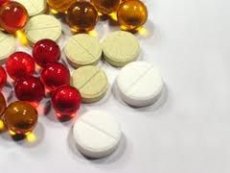Medical expert of the article
New publications
Scientists have revised the molecular mechanisms of Parkinson's disease
Last reviewed: 30.06.2025

All iLive content is medically reviewed or fact checked to ensure as much factual accuracy as possible.
We have strict sourcing guidelines and only link to reputable media sites, academic research institutions and, whenever possible, medically peer reviewed studies. Note that the numbers in parentheses ([1], [2], etc.) are clickable links to these studies.
If you feel that any of our content is inaccurate, out-of-date, or otherwise questionable, please select it and press Ctrl + Enter.

The protein synuclein, responsible for the formation of amyloid deposits in Parkinson's disease, exists in a polymeric form in healthy cells, and in order to form toxic amyloid deposits, it must first leave the normal protein complexes.
Neurodegenerative diseases are usually associated with the formation of amyloids - deposits of incorrectly folded protein in nerve cells. The correct functioning of a protein molecule depends entirely on its spatial arrangement, or fold, and disturbances in the three-dimensional structure of the protein usually lead to diseases of varying severity. A different folding method can lead to mutual "sticking" of protein molecules and the formation of a sediment, amyloid strands, which ultimately destroys the cell.
In Parkinson's disease, amyloid deposits in neurons called Lewy bodies consist primarily of the protein alpha-synuclein. It was long believed that alpha-synuclein exists in healthy neurons in a highly soluble monomeric form, but when its 3D structure is disrupted (for example, by a mutation), its molecules begin to oligomerize uncontrollably - stick together in complexes, forming amyloid deposits.
Researchers at Brigham and Women's Hospital in Boston and Harvard Medical School say this is a long-standing misconception. They believe that healthy cells do not contain single synuclein molecules, but rather large complexes that are nonetheless highly soluble. In this state, the protein is protected from uncontrolled self-adhesion and precipitation.
How did synuclein manage to fool the scientific community for so long? As the authors write in the journal Nature, scientists are, in a sense, to blame themselves. Synuclein was treated with extremely harsh methods for a long time: one of its characteristic features is its resistance to thermal denaturation and chemical detergents. It does not coagulate or precipitate even when boiled. (And everyone knows what happens to proteins when boiled - just boil an egg.) Largely because of this, everyone believed that in a living cell it exists as highly soluble single molecules that are not so easy to make oligomerize and precipitate. For purely technical reasons, it was easier to isolate it from cells under harsh conditions, and therefore it was always observed as single, monomeric molecules, since intermolecular interactions were disrupted. But when scientists tried to extract the protein from biological material using gentler methods, they discovered that in a healthy cell, synuclein exists as tetramers, or four protein molecules linked together.
It is also important that the researchers used human blood and nerve cells to isolate and study synuclein, rather than working with bacteria to obtain the protein. The experiments showed that the protein in tetrameric form is very resistant to aggregation and precipitation: throughout the entire experiment, which lasted 10 days, synuclein tetramers did not show a tendency to form anything amyloid. On the contrary, synuclein monomers began to form characteristic clusters after just a few days, which by the end of the experiment had formed into real amyloid strands.
Therefore, the researchers conclude, in order to precipitate, synuclein must first monomerize, leaving the tetrameric complexes. This means that it is necessary to reconsider the usual methods of therapy used in Parkinson's disease. If previously all efforts were directed at preventing the polymerization of synuclein, then in light of the obtained results it is necessary to act just the opposite: to keep the protein in a "healthy" polymer state and prevent the molecules from leaving the tetrameric complexes, so that they do not have a chance to randomly stick together and form the notorious amyloid deposits.


 [
[